Two chapters from Otoyomegatari today. #86 came out a few weeks ago actually, but it was such a fluffernutter that to be honest I didn’t think I could find enough to write about. The follow-up turned out to be a short one (7 pages), and definitely a respite chapter as well. Historically, with this series that tends to mean something big is about to happen in the main storyline. But we’ll see…
“Knowing Someone” is at the very least an opportunity for Mori-sensei to show off her brilliance at drawing the naked female body (as opposed to… her brilliance at drawing everything else?). Anis and the gang are at the local bathhouse, engaging with the townsfolk and debating the affairs of the day. One key point is the search for a wife for her son – though as Hassan is eight months old that’s not especially urgent. The consensus is that wives are the ones who need to drive the boat and let the husbands think they’re doing it, as “it takes a woman to know a woman”. Anis takes time to give a little writing demonstration for the crowd – which impresses them almost as much as the idea of photographs.
Up next we’re back in the village, and checking in on the old wood carver (if we’ve ever been told his name I’ve forgotten it). His perpetual hanger-on Rostem is there, and the adorable little walnut decides to try his hand at wood carving when the old man goes to wash up. Given that he’s maybe four years old that’s not really a great thing for him to do unsupervised, and the carver is quite vexed when he returns. But I love the way he handles things – it’s not his work that he’s worried about (and it surely took him ages) but Rostem getting hurt. When he realizes everything is fine, he offers to let Rostem try his (guided) hand, then sternly reproaches him when he tries to go off on his own again. Do I sense the start of an apprenticeship here?
In its quiet way this small scene is very emblematic of the sort of place the Eihon’s village is. Everyone takes care of everyone, and the most irreplaceable commodity the town has is people. It was a different time and this is a different place, and it’s easy to fall into the trap of romanticizing too much. These folks worked hard from a young age and probably died relatively young on average, and even if they’re quite liberated by comparison to Anis’ town the women are by no means on equal terms with the men. Still – this is community in a sense we just don’t get to experience it in the industrial world. And I do believe something has been lost in the transition.



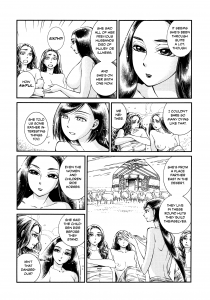
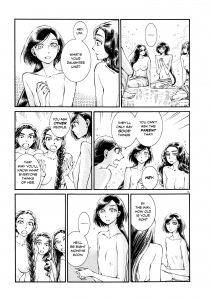
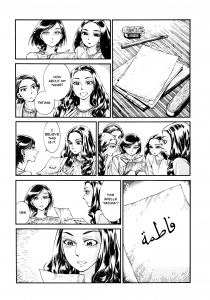

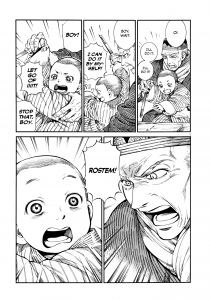
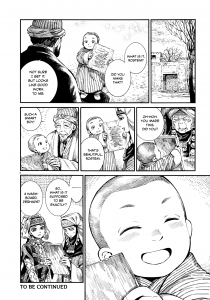


Marty
December 18, 2019 at 8:21 amIf there’s one thing this manga does very well is not fall into the “noble savage” trope when it comes to its portrayal of these communities, something easier said than done.
Guardian Enzo
December 18, 2019 at 1:18 pmHeh, I was trying to avoid using that language but you went right there.